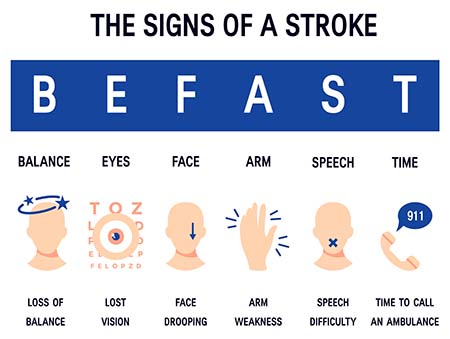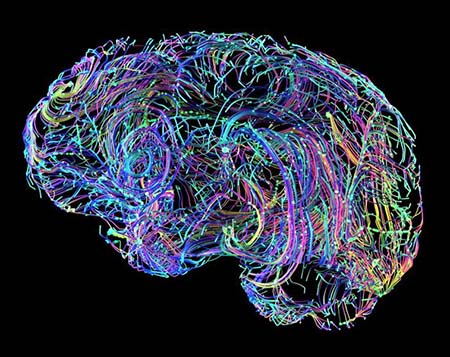May is Stroke Awareness Month, which means it's a good time to make sure you know the common symptoms of stroke and learn about your own risk.
Early stroke detection — recognizing the symptoms and immediately seeking treatment — is key to improving survival, minimizing disability, and speeding recovery times.
"With every 30 minutes that can be shaved off the response time, there's an associated decrease in morbidity and mortality," said Kwan Ng, director of vascular neurology at the UC Davis Medical Center Comprehensive Stroke Program. "It's important to be aware of the symptoms of stroke and get help right away if one or more of them is happening to you."
Ng says you need to remember two words — BE FAST — which stands for:
B – balance loss, especially sudden
E – eyesight loss, especially sudden
F – face drooping or numbness
A – arm weakness or numbness
S – speech difficulty, especially slurred speech
T – time to call 911
Other common symptoms that should trigger a call to 911 include sudden:
- numbness or weakness in a leg or on one side of the body
- confusion or trouble understanding speech
- trouble walking, dizziness, or coordination
- severe headache with no known cause
Stroke can occur at any age
Although many people think of stroke as something that happens to the elderly, it can occur at any age, even in children. "We are seeing more younger stroke patients today — patients under age 50 — than ever before," Ng said.

Risk factors for stroke include smoking, high blood pressure, atherosclerosis ("hardening of the arteries"), diabetes, coronary artery disease, atrial fibrillation and high blood cholesterol. Women also have certain risks with some types of birth control pills and hormone replacement therapy.
There are lesser-known risk factors for stroke, such as:
- cancer and chemotherapy
- overconsuming energy drinks
- aura with migraine
- sickle cell disease
- chronic kidney disease
There's even the extremely rare (but real) Beauty Parlor Stroke Syndrome, in which hyperextension of the neck while getting your hair washed can sometimes cause a tear in one of the four major arteries that go to the brain, resulting in a blood clot that causes a stroke.
Cervical artery dissection, a tear of the inner layer of the wall of an artery that can occur spontaneously or from trauma (such as whiplash) is a leading cause of stroke in patients younger than 45 years.
"We have treated patients who don't have any of the typical risk factors, which is why we are such strong advocates for symptom awareness," Ng said.
"But the causes of stroke in many cases are preventable or controllable with lifestyle change and careful medication management," said Ng. He suggests that people talk to their primary care physicians and read about the many ways to reduce the risk of stroke.
What is stroke?
Stroke is the number 5 cause of death and a leading cause of adult disability in the U.S. On average, someone in the U.S. suffers a stroke every 40 seconds, and nearly 795,000 people suffer a new or recurrent stroke each year.
The risk of having a stroke varies with race and ethnicity. According to the CDC, the risk of having a first stroke is nearly twice as high for Black Americans compared to whites, and Black Americans have the highest rate of death due to stroke. And although stroke death rates have declined for decades among all races and ethnicities, Hispanic Americans have seen an increase in death rates since 2013.

Stroke occurs when a blood vessel that carries oxygen and nutrients to the brain is blocked by a clot (ischemic stroke) or bursts (hemorrhagic stroke), causing parts of the brain to die. Another type of cerebrovascular event — known as a transient ischemic attack, or TIA — is caused by a temporary blood clot and is often called a "warning stroke."
According to the Centers for Disease Control, there are many ways people can minimize their risk of stroke, including eating a healthy diet, maintaining a healthy weight, exercising regularly, not smoking and managing diabetes and high blood pressure.






